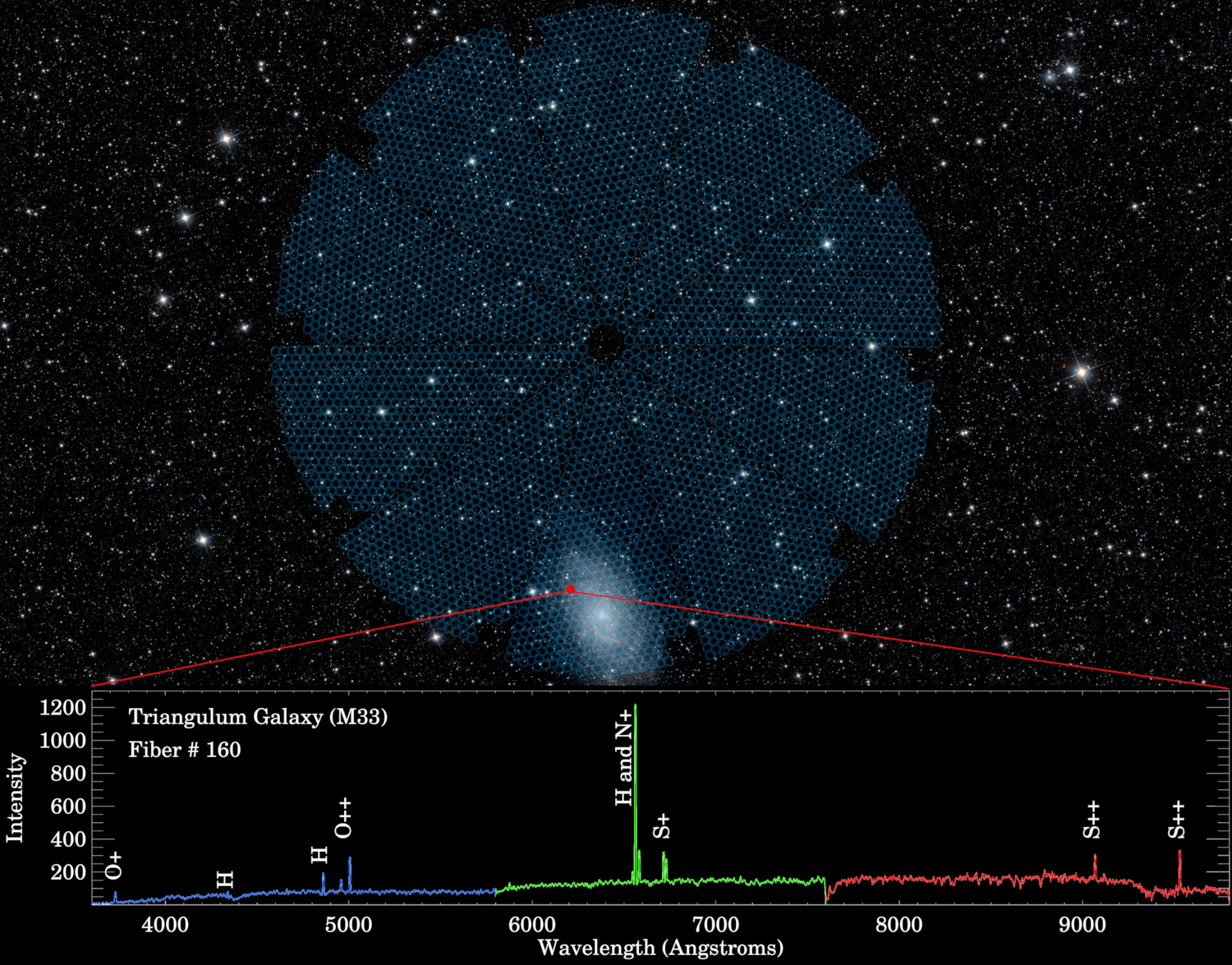5,000 Mini-Eyes Just Blinked Open to Scan the Skies for Dark Energy

Thousands of tiny eyes just blinked open and will soon scan 35 million galaxies for evidence of dark energy.
These 5,000 mini-telescopes make up the Dark Energy Spectroscopic Instrument (DESI), which was installed on the Mayall Telescope at the Kitt Peak National Observatory in Arizona. Astronomers recently completed the first test run of the nearly-complete DESI, which, from its high mountain perch, will soon scan the cosmos for dark energy, beginning early next year.
"With DESI, we are combining a modern instrument with a venerable old telescope to make a state-of-the-art survey machine," Lori Allen, director of Kitt Peak National Observatory at the National Science Foundation's National Optical-Infrared Astronomy Research Laboratory, said in a statement.
Related: 4 Dark Matter Experiments to Keep an Eye on in 2019
Dark energy is an invisible force that's thought to be accelerating the expansion of the universe and is thought to make up 68% of it, according to the statement.
DESI is designed to provide precise measurements of the rate of expansion of the universe. To figure out how much of the universe expanded as light from different galaxies traveled to Earth, the instrument will detect light from a particular set of galaxies, split that light into narrow bands of color and use each of those bands to measure the galaxies' distances from our planet.
The instrument is equipped with spectrographs, which split the light and also measure redshift, or the shift in the color to the longer, redder wavelengths of light from objects moving away from us. In five years, the statement said, DESI will have scanned 35 million galaxies and 2.4 million quasars, the brightest objects in the universe.
Sign up for the Live Science daily newsletter now
Get the world’s most fascinating discoveries delivered straight to your inbox.
In the best conditions, DESI can analyze 5,000 galaxies every 20 minutes, according to the statement. These telescopes can also shift their gaze quickly. It takes about 10 seconds for these eyes, which each have a single fiber-optic cable the width of a human hair, to refocus from one set of galaxies to another, according to the statement.
What's more, DESI will be able to peer into the distant, early universe, going back in time to about 11 billion years ago. At that time, gravity is thought to have slowed the universe's expansion, whereas now, dark energy is thought to be speeding the expansion up.
"By looking at objects very far away from us, we can actually map the history of the universe and see what the universe is composed of by looking at very different objects from different eras," Nathalie Palanque-Delabrouille, a DESI spokesperson and an astrophysics researcher at France’s Atomic Energy Commission (CEA), said in the statement.
- The Mysterious Physics of 7 Everyday Things
- 8 Ways You Can See Einstein's Theory of Relativity in Real Life
- 18 Times Quantum Particles Blew Our Minds in 2018
Originally published on Live Science.


Yasemin is a staff writer at Live Science, covering health, neuroscience and biology. Her work has appeared in Scientific American, Science and the San Jose Mercury News. She has a bachelor's degree in biomedical engineering from the University of Connecticut and a graduate certificate in science communication from the University of California, Santa Cruz.










